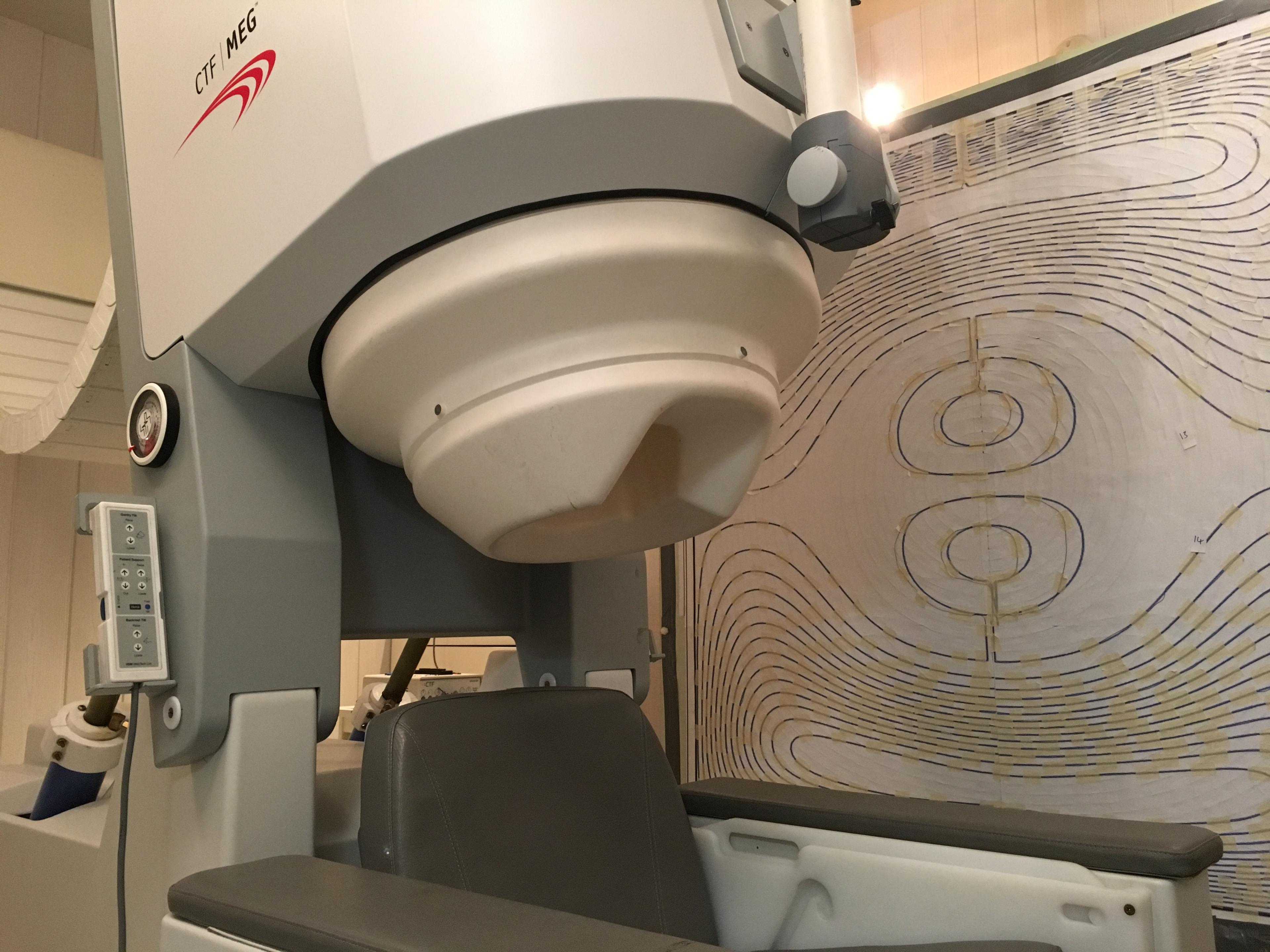The wearable brain scanner you can move around in
- Published
The brain scanner allows patients to move
Scientists in Nottingham have invented a new type of brain scanner that can be worn on the head, allowing patients to move while being scanned.
The device records the tiny magnetic fields generated by the brain.
The researchers said it could revolutionise brain imaging.
Writing in Nature,, external they showed it could pinpoint the part of the brain responsible for activities like nodding, drinking tea and playing bat and ball.
Magnetoencephalography (MEG) has been around for decades, but conventional scanners are large, weighing half a ton.
The sensors used to measure the brain's magnetic fields have to be super-cooled to minus 269C.
The UK has 10 MEG scanners and their use is largely limited to research.
Part of the problem is that subjects have to keep completely still.
'Behaving naturally'
The wearable MEG uses lightweight quantum sensors mounted in a 3D printed helmet.
The sensors work at room temperature and can be placed directly on the scalp, which greatly increases the signal they can pick up.
The wearable scanner means that babies, children and people with movement disorders can have their brain activity measured.
Matt Brookes, physicist, who leads the study at Nottingham University told me: "In terms of mapping brain activity, this represents a step change.
"Neuroscientists will be able to envisage a whole new world of experiments where we try to work out what the brain is doing but whilst a person is behaving naturally and moving around."

The UK has 10 of these conventional MEG scanners which weigh half a ton
Prof Gareth Barnes, who leads the project at the Wellcome Trust Centre for Human Neuroimaging at University College London, told me: "For children with epilepsy, this technology will be incredibly beneficial.
Doctors can scan them while they are moving around and that's never been done before."
The researchers say that the wearable MEG scanner will also be useful in imaging patients with Parkinson's disease.
All MEG has to be done in a special room which is shielded from much of the Earth's magnetic field.
The team at Nottingham created special electromagnetic coils, which they mounted on boards surrounding the scanner, to further reduce the effects of the Earth's field around the scanner by a factor of around 50,000.
The research was funded by the Wellcome Trust and developed at the Sir Peter Mansfield Imaging Centre in Nottingham.
Follow Fergus on Twitter, external
